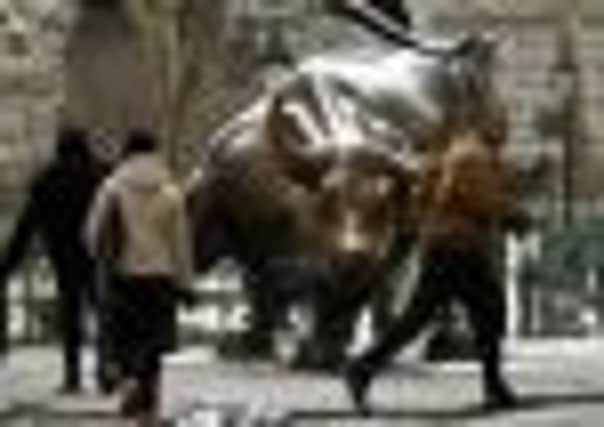Staying passive will pay off when it comes to putting your hard-earned cash into equities


Asset management firms are ramping up the promotion of their best-known funds as the so-called Isa season heats up. Those funds are almost always actively run, where the fund manager has the freedom, within the fund criteria, to decide what they should and shouldn’t invest in.
“Passive” funds that merely seek to mirror the performance of an index have long come a distant second to active funds in the popularity stakes, but that is slowly changing.
Advertisement
Hide AdAdvertisement
Hide AdTracker funds now have a record high share of almost 9 per cent of the money managed by investment funds after seeing a 36 per cent spike in inflows last year, according to the Investment Management Association.
So is the tide starting to turn? The active versus passive debate tends to polarise financial advisers, with most expressing a preference for one type of investing over the other.
Those who favour passive funds point to their lower costs – and that is one of the biggest factors currently attracting investors to their way of thinking.
The impact of charges on investment returns is far clearer in a low growth environment, while new rules around the sale of investment products mean advisers are having to look more closely at underlying costs.
Add to that an increased political scrutiny of charges, not least in the context of pension funds, as there’s little doubt that many investors are paying heed to the small print in a way they haven’t previously.
The average actively managed unit trust or open-ended investment company (OEIC) levies total charges of around 2.5 per cent, with some, typically those with high trading levels, costing more than 3 per cent.
Managers of passive vehicles such as tracker funds and exchange traded funds (ETFs) don’t buy and sell, however, which helps make them cheaper. Trackers and ETFs are considered expensive if they charge more than 0.5 per cent a year, with most boasting total expense ratios (TERs) between 0.1 and 0.3 per cent a year.
Not only does their lower cost make them attractive, but it gives passive funds an advantage when it comes to the eventual returns.
Advertisement
Hide AdAdvertisement
Hide AdMore than three-quarters of active UK equities managers have underperformed their benchmark over the past five years, falling only slightly to 74 and 73 per cent over 10 and 15 years, according to research from passive fund provider Vanguard.
In the UK gilts market more than nine in ten active managers have fallen short of their benchmark over both 10 and 15 years, it found.
Yet despite the higher charges and likelihood of inconsistent performance, most investors continue to place their faith in active fund managers, to the mild exasperation of Alan Dick, owner of Forty Two Wealth Management in Glasgow.
“The weight of evidence in favour of a passive approach is overwhelming,” he said. “All of the scientific evidence supports a passive strategy while active managers continue to cling to a belief that is unfounded and cannot be proven.”
The passive approach has significant pitfalls, however, and many advisers prefer to use a blend of both approaches.
The Financial Services Authority (FSA) recently warned that those advising exclusively on either active or passive couldn’t be considered truly independent.
“The FSA is really saying that it doesn’t believe investors start off wanting passive funds and therefore cannot be considered a homogenous grouping,” Dick claimed.
“However, if an adviser explains the pros and cons of both approaches properly it is conceivable that almost 100 per cent of investors would opt for the passive strategy.”
Advertisement
Hide AdAdvertisement
Hide AdWhere active funds have the advantage is that they offer the chance of outperforming the market, whereas trackers are hostages to the index they track. That also means less flexibility and diversification, whereas an active managers can choose to steer clear of certain companies or sectors.
“Active managers aim to correctly time their purchase or sale on the basis of prevailing market trends, the economy, political and other current events, and company-specific factors, such as earnings growth,” explained Alec Stewart, head of asset management at Anderson Strathern in Edinburgh.
“In other words, the aim of active fund management is to outperform the index associated with that fund, or to outperform other fund managers that they may be competing against.”
One advantage of this approach is the potential for higher returns as the manager aims to outperform the relevant index and can make changes if he anticipates a downturn in the market.
Finding the managers who consistently do this successfully is easier said than done, however.
“Clearly some active managers do outperform passive alternatives some of the time, but the problem for is that there is no way of knowing who these managers will be in advance and therefore no way to reliably profit from the out-performance,” said Dick. “The managers who outperform differ from one period to the next.”
Getting it right involves a blend of the two. Even investors wanting to minimise costs and stick to passive funds do so on the assumption that the chosen index will rise over time. But to switch between different markets entails a degree of active management, Stewart pointed out.
“Indeed, the original selection of which markets to invest in and in what proportions, requires an ‘active’ decision,” he said.
“We are in favour of keeping costs to a minimum, but feel that by definition, even passive investment strategies must be actively managed.”